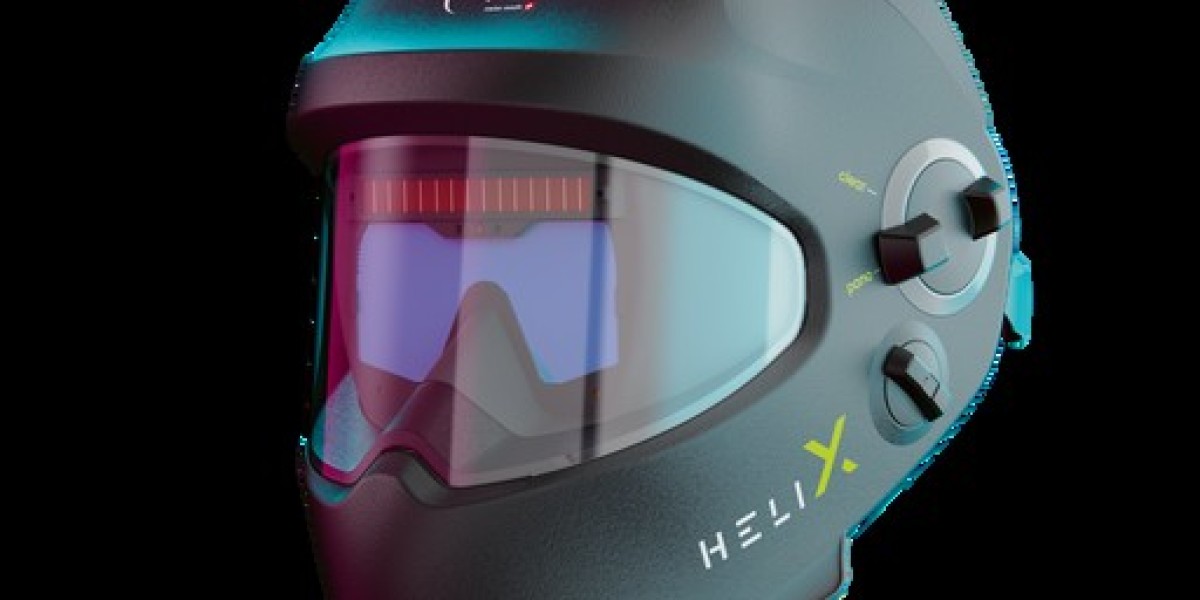Welding is a skill that requires precision, practice, and, most importantly, safety. One of the essential tools for a welder is a reliable welding helmet. A good helmet not only protects you from harmful sparks and UV rays but also ensures that you can see your work clearly and maintain accuracy. This beginner’s guide will help you understand the key factors to consider when selecting a welding helmet, explore popular options like the Optrel welding helmet and ESAB welding helmet, and explain advanced features such as PAPR welding helmets.
Why You Need a Quality Welding Helmet
The primary purpose of a welding helmet is to protect your face, eyes, and neck from intense light, heat, and flying debris. Poor eye protection can lead to "welder's flash," a painful condition caused by overexposure to UV radiation. Additionally, modern welding helmets improve efficiency by offering features like auto-darkening filters, true-color lenses, and ergonomic designs. These features help welders focus on their work without constantly adjusting the helmet.
Types of Welding Helmets
Welding helmets come in various designs, each suited for specific applications. Understanding these types can help you make an informed decision.
Passive Welding Helmets
These traditional helmets have a fixed-shade lens, typically rated at Shade 10. They are durable and affordable but require the welder to flip the helmet up and down manually.
Pros:
- Affordable and durable
- Simple design with no electronic components
Cons:
- Less efficient for frequent welding tasks
Auto-Darkening Welding Helmets
These helmets feature auto-darkening filters (ADF) that adjust the lens shade automatically when the welding arc is struck. They are ideal for beginners and professionals alike.
Pros:
- Improved efficiency and safety
- Adjustable settings for different welding types
Cons:
- More expensive than passive helmets
Key Features to Look For in a Welding Helmet
Choosing the right welding helmet depends on your needs and preferences. Here are some important features to consider:
Lens Shade and Auto-Darkening
Auto-darkening helmets are more versatile, allowing you to switch between different shade levels based on your task. Look for a helmet with a variable shade range (e.g., 9-13).
Viewing Area
A larger viewing area enhances visibility, making it easier to monitor the weld puddle and surroundings. Helmets like the ESAB welding helmet are known for their generous viewing windows.
True-Color Technology
True-color lenses improve color accuracy, reducing eye strain and allowing for better precision. The Optrel welding helmet, for instance, offers exceptional true-color clarity.
Comfort and Fit
An ergonomic design with adjustable headgear ensures the helmet stays comfortable during long welding sessions. Lightweight helmets reduce neck fatigue.
Safety Standards
Ensure the helmet meets industry safety standards, such as ANSI Z87.1 or EN379, for protection against UV/IR radiation and impact.
Comparing Popular Brands: Optrel vs. ESAB
Two brands stand out for their innovative and high-quality welding helmets: Optrel and ESAB.
Optrel Welding Helmet
Optrel helmets are renowned for their advanced technology and comfort.
Key Features:
- Crystal Lens Technology: Provides true-color vision with unparalleled clarity.
- Lightweight Design: Reduces strain for extended use.
- Ideal For: Professionals requiring precision and comfort.
ESAB Welding Helmet
ESAB offers durable and feature-rich helmets suitable for various applications.
Key Features:
- Wide Viewing Area: Excellent visibility for complex tasks.
- Durable Build: Withstands harsh industrial environments.
- Ideal For: Heavy-duty welding in challenging conditions.
Exploring PAPR Welding Helmets
For those working in environments with hazardous fumes and particulates, PAPR welding helmets (Powered Air Purifying Respirators) are a game-changer.
Benefits of PAPR Welding Helmets:
- Respiratory Protection: Filters out toxic fumes and particles.
- Improved Comfort: Keeps the helmet cool and ventilated.
- Increased Safety: Combines respiratory and face protection in one device.
Both Optrel and ESAB offer PAPR models designed to provide superior protection and usability.
Tips for Beginners
If you’re new to welding, consider these tips when selecting your first welding helmet:
- Set a Budget: Start with a mid-range helmet that balances quality and affordability.
- Choose Auto-Darkening: For beginners, an auto-darkening helmet simplifies the learning process.
- Prioritize Comfort: Lightweight and adjustable helmets are ideal for extended use.
- Research Brands: Explore models from trusted names like Optrel and ESAB.
- Consider Future Needs: If you plan to work in hazardous environments, invest in a PAPR welding helmet
Maintenance and Care
A well-maintained welding helmet lasts longer and performs better. Follow these tips to keep your helmet in top condition:
- Clean the Lens: Regularly wipe the lens with a soft cloth to prevent scratches and maintain clarity.
- Inspect for Damage: Check for cracks or wear on the helmet shell and headgear.
- Replace Batteries: For auto-darkening helmets, replace the batteries as needed.
- Store Properly: Keep the helmet in a cool, dry place to avoid damage from moisture or extreme temperatures.
Conclusion
Picking the best welding helmet is a critical decision for both safety and efficiency. From traditional passive helmets to advanced models like Optrel welding helmets, ESAB welding helmets, and PAPR welding helmets, there are plenty of options to suit your needs. For beginners, an auto-darkening helmet with essential features like true-color lenses and adjustable headgear is a great starting point. As you gain experience, you can explore advanced options that enhance performance and safety. Investing in a high-quality welding helmet not only protects you but also ensures a better welding experience, allowing you to focus on your craft with confidence.



